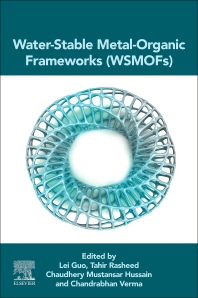Books in Inorganic chemistry
Books in Inorganic chemistry
Explore a broad spectrum of topics covering transition metals, coordination compounds, solid-state materials, and catalysis. Featuring pioneering research, synthesis strategies, and real-world applications, this collection supports inorganic chemists, materials scientists, and engineers in developing new materials, catalysts, and functional systems. Addressing sustainability and advanced characterization techniques, these resources facilitate discovery in areas such as energy storage, electronics, and environmental remediation.
- 1st Edition
- Claudio Pettinari
- English

Chemistry and Applications of Metal-Organic Framework (MOFs)
- 1st Edition
- Nikolay Gerasimchuk
- English

Cyanoximes
- 1st Edition
- Lei Guo + 3 more
- English

Water-Stable Metal-Organic Frameworks (WSMOFs)
- 1st Edition
- Volume 86
- English

Advances in Inorganic Chemistry
- 1st Edition
- Volume 85
- English

Main Group Chemistry
- 1st Edition
- Masashi Hojo
- English

Fundamental Coordination Ability of s-Block Metal Ions
- 1st Edition
- Hafezeh Nabipour + 1 more
- English

Applications of Metal-Organic Framework Composites
- 4th Edition
- James E. House
- English

Inorganic Chemistry
- 1st Edition
- Roman Boča
- English

Electronic Energy Levels of Transition Metal Complexes
- 1st Edition
- Ravin Narain
- English

Natural and Synthetic Hydrogels